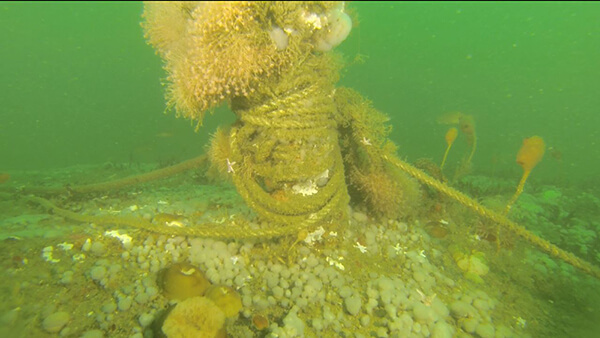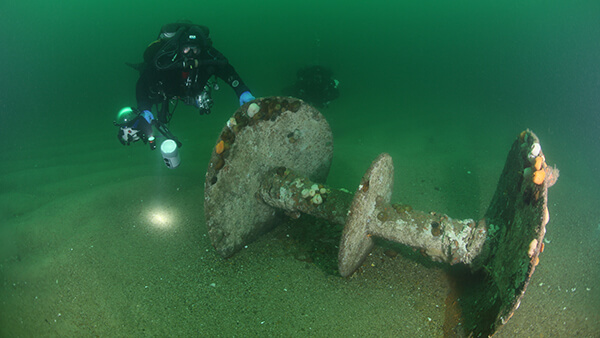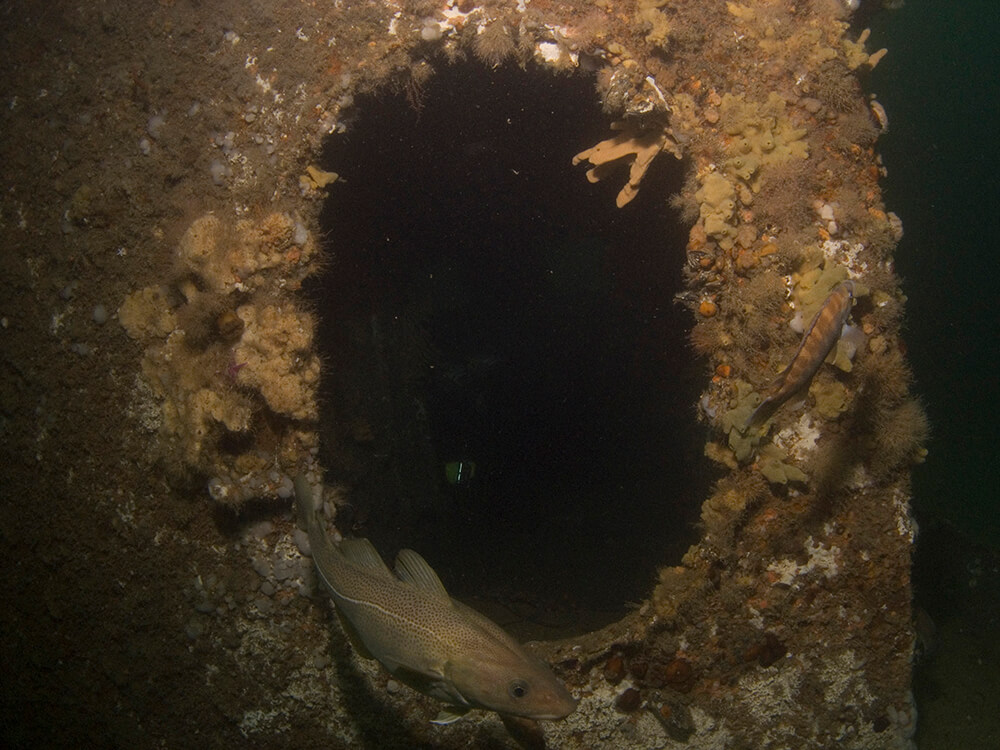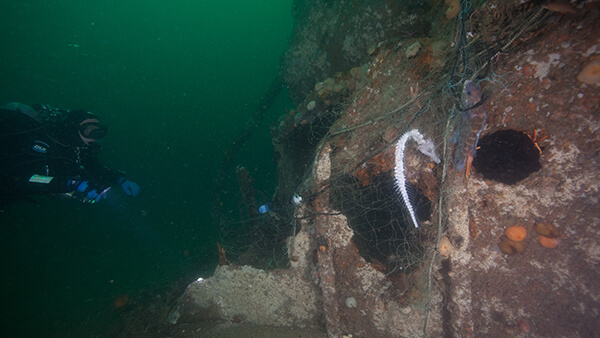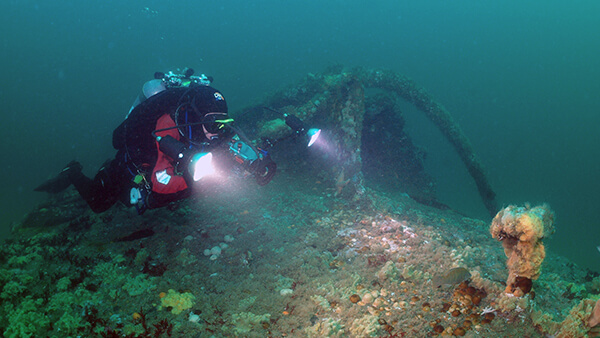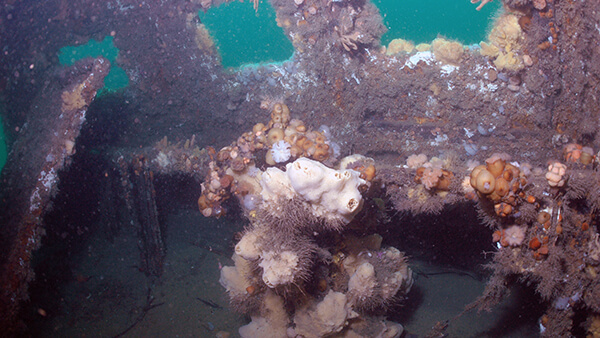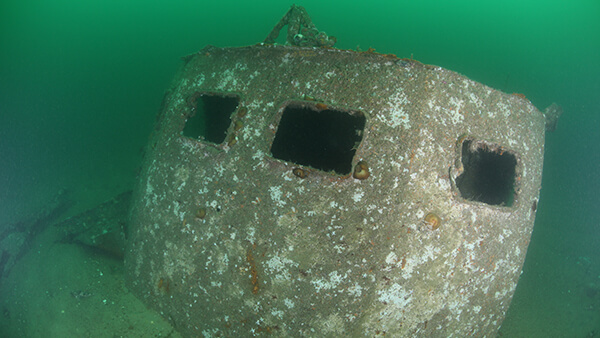Unidentified Trawler
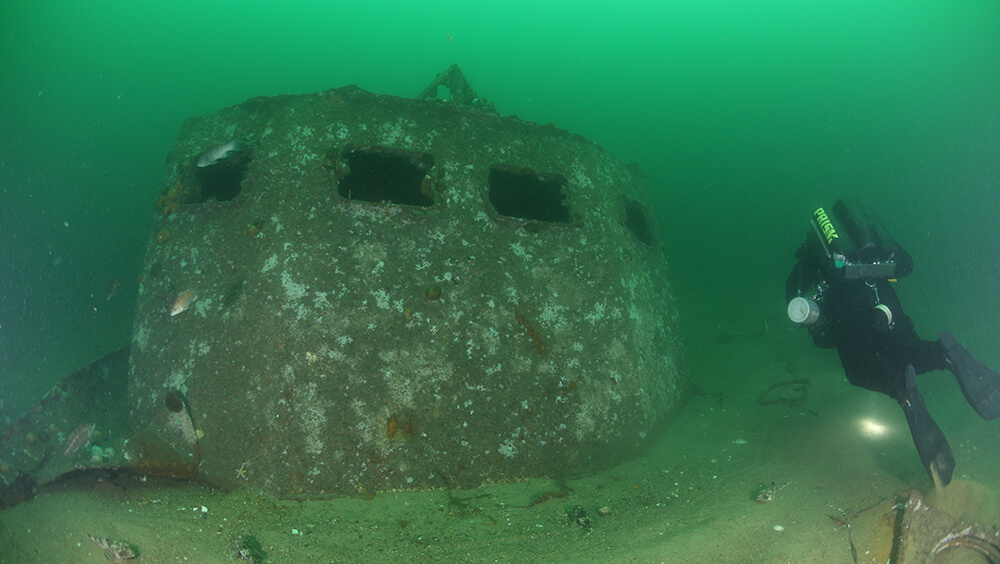
Ship Stats
Depth: 105-110 feet
Length: 65 feet (estimated) Breadth: 19 feet (estimated) Depth of Hold: N/A
Tonnage: N/A
Built: Date unknown, steel-hulled trawler
Port of Registry: Unknown
Owner: Unknown
Date Lost: Unknown -- likely between 1970 and 1990
Crew: Unknown
Sunk By: Unknown Survivors: Unknown
Significance: On-going mystery; possible mid-20th century fishing vessel type and technology; the site is a destination for divers. The sanctuary, in partnership with Northern Atlantic Dive Expeditions, installed a subsurface mooring on this shipwreck.
Present Day
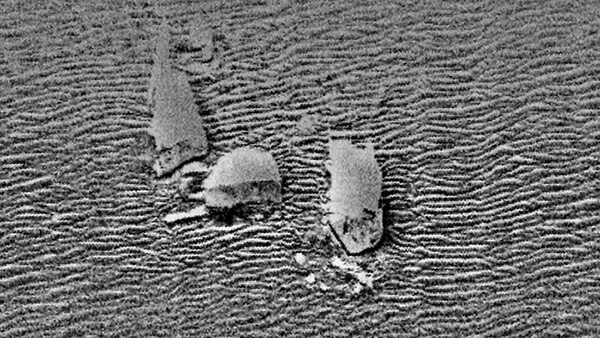
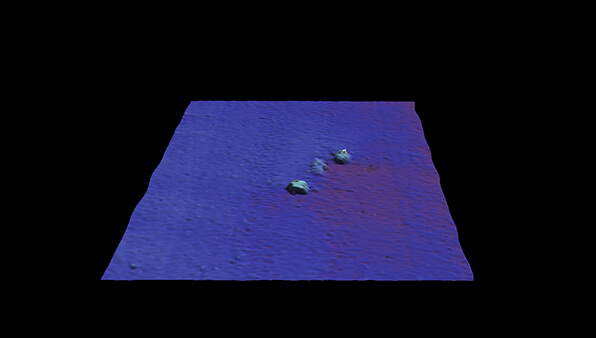
This unidentified fishing trawler shipwreck rests on top of Stellwagen Bank in 105-110 feet of water in the Outbound Lane of the Port of Boston's Traffic Separation Scheme (TSS). The vessel is broken into three main components: pilothouse, hull, and stern, along with a net reel surrounded by smaller hull fragments, making a determination of its length a coarse estimate of 65 feet. Measurements of the trawler's stern indicate a breadth of around 19 feet. The vessel's hull is painted light blue and white, and there are no obvious indications as to why it sank. The sanctuary is seeking help from anyone who might know its name or has information on recent trawler shipwrecks in the sanctuary.
Unidentified Trawler Coordinates:
Degrees Minutes = N 42-18.73056 W 70-17.8425
Historical Background
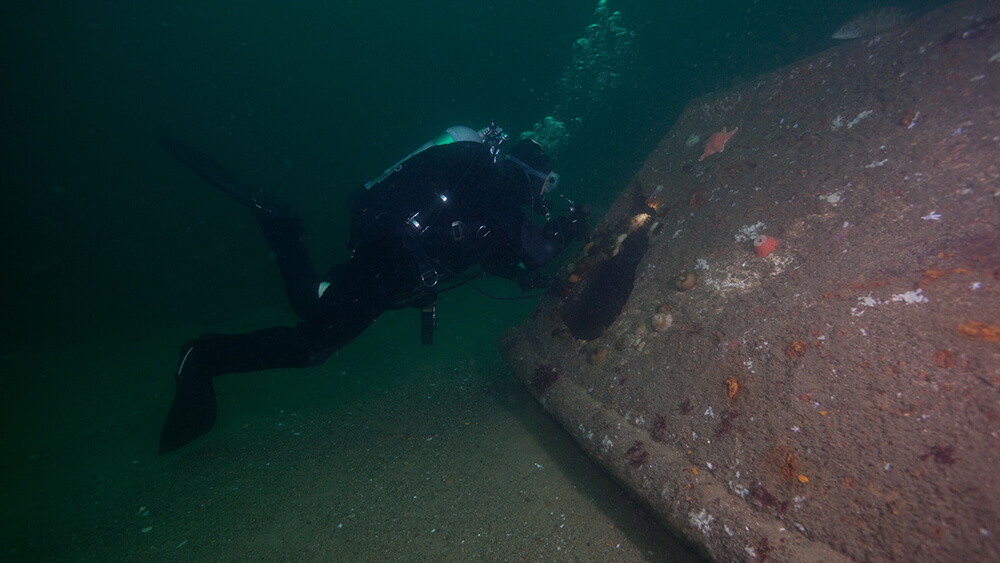
When compared to other sanctuary shipwrecks, the quantity of invertebrate growth covering the hull suggests that it sank before 1990. Steel stern trawlers came into common use in the late 1960s. These dates suggest a likely sinking date between 1970 and 1990. Local scuba diving charters are now taking divers to the shipwreck to help us identify this wreck.
